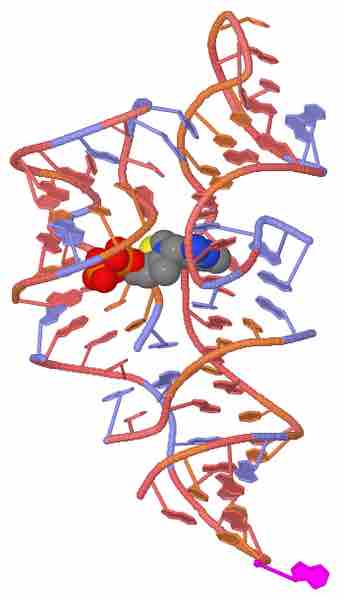Riboswitches are specific components of an mRNA molecule that regulates gene expression. The riboswitch is a part of an mRNA molecule that can bind and target small target molecules. An mRNA molecule may contain a riboswitch that directly regulates its own expression. The riboswitch displays the ability to regulate RNA by responding to concentrations of its target molecule. The riboswitches are naturally occurring RNA molecules that allow for RNA regulation . Hence, the existence of RNA molecules provide evidence to the RNA world hypothesis that RNA molecules were the original molecules, and that proteins developed later in evolution.

Example of a Riboswitch
A 3D image of the riboswitch responsible for binding to thiamine pyrophosphate (TPP)
Riboswitches are found in bacteria, plants, and certain types of fungi. The various mechanisms by which riboswitches function can be divided into two major parts including an aptamer and an expression platform. The aptamer is characterized by the ability of the riboswitch to directly bind to its target molecule. The binding of the aptamer to the target molecule results in a conformational change of the expression platform, thus affecting gene expression. The expression platforms, which control gene expression, can either be turned off or activated depending on the specific function of the small molecule. Various mechanisms by which riboswitches function include, but are not limited to the following:
- The ability to function as a ribozyme and cleave itself if a sufficient concentration of its metabolite is present
- The ability to fold the mRNA in such a way the ribosomal binding site is inaccessible and prevents translation from occurring
- The ability to affect the splicing of the pre-mRNA molecule
The riboswitch, dependent on its specific function, can either inhibit or activate gene expression.